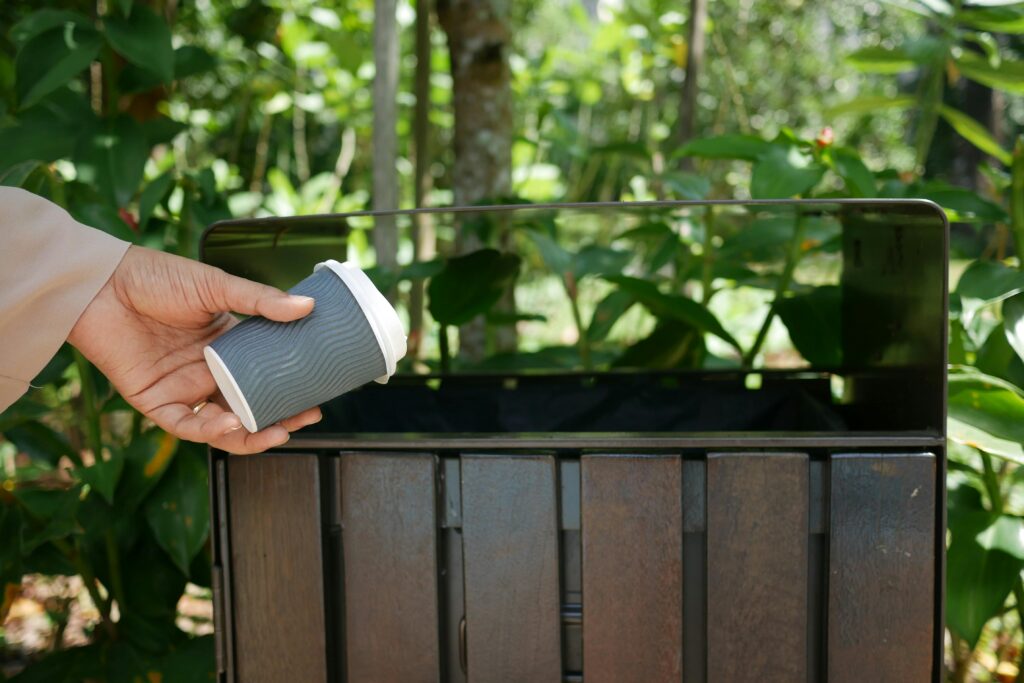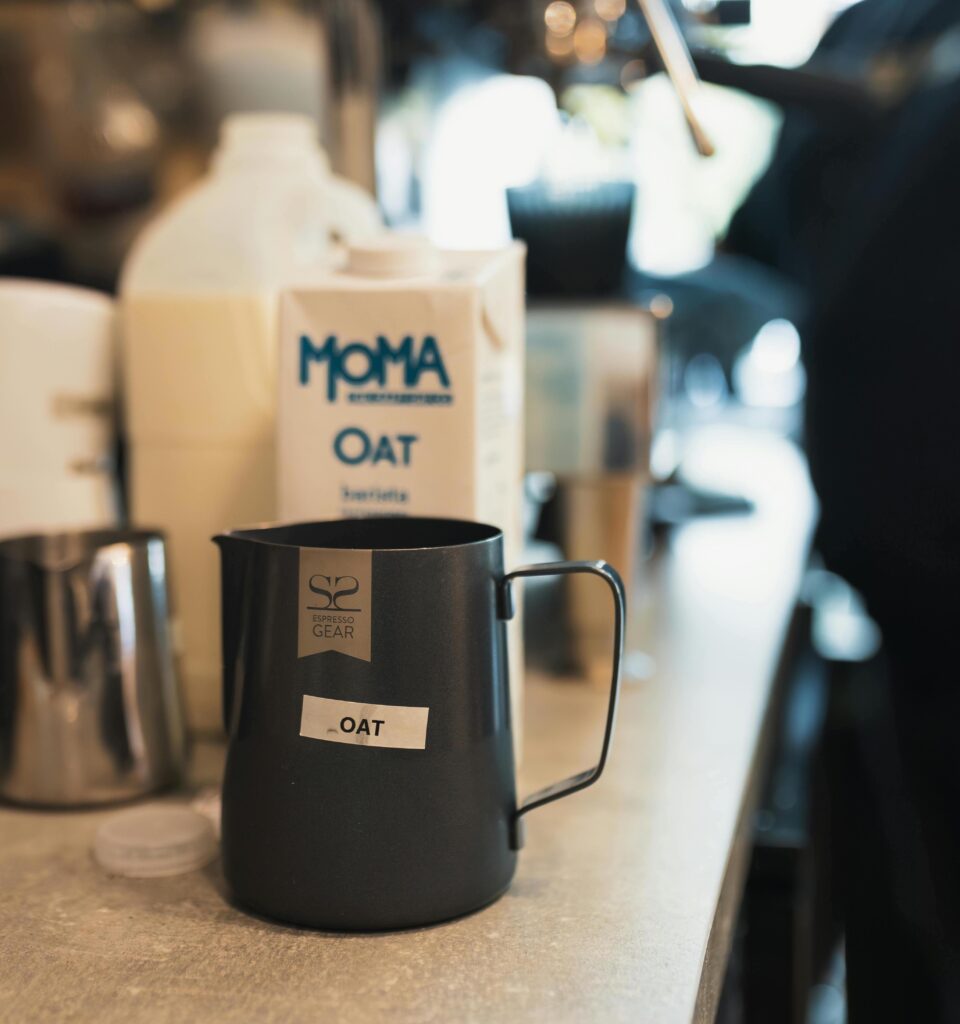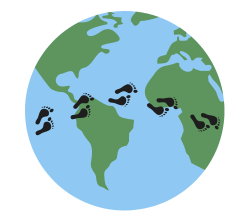I first started drinking takeout coffee in a serious way during the pandemic. Before then, I enjoyed going to cafés to meet friends, read and work. A few months into the pandemic, I realized that I missed getting coffee drinks and the café experience. And so a new habit was born.
These days, I can come up with many excuses to get a latte—for example, that I’m tired before an evening activity or that getting a coffee will make the day more exciting or will help me focus.
Check out this article for an interesting read about the history of to-go coffee and its association with convenience culture.
Ordering coffee to go may be convenient when you’re on the go, but we know that takeout coffee isn’t great for the planet or your wallet. Here are some ways to green your takeout coffee routine.
The environmental impact of takeout coffee

Did you know that Canadian adults drink an average of 2.8 cups of coffee per day? Many of those coffees come in disposable cups. Globally, 16 billion paper cups are used per year. Though most cups are made of paper, they’re often lined with a type of plastic called polyethylene, which makes them hard to recycle. The cups may end up in landfills or in our environment as litter.
It’s not just the cup. The production of coffee—including cultivation and harvesting, processing and transportation—uses a lot of energy, water and, often, fertilizer. The production of coffee is responsible for 50 to 80% of its carbon footprint, while preparation and consumption is responsible for 20 to 50%. Learn more about the environmental impacts of coffee production.
Eco-friendly takeout coffee tips
From the cup to the contents, try these tips to make your takeout coffee routine more eco-friendly!
Bring a reusable cup
Try bringing a reusable cup and asking the barista to put your order in that! Sometimes, there’s even a discount for bringing your own cup. These days, reusable coffee cups come in all different styles and sizes, so you’ll be sure to find one that you like. Look for a reusable cup made of stainless steel, glass or ceramic.
Note that reusable cups need to be used between 20 and 100 times to offset the emissions from their production—so be sure to hang on to your cup and take good care of it. To save resources, wash it in cold water or a full dishwasher.
Participate in a reusable cup system

I get it: You don’t always remember your reusable cup, or sometimes the impulse to get a coffee strikes while you’re away from home. Thankfully, many cafés have reusable cup systems, such as mug libraries and cup exchanges. You might be able to borrow a cup and return it to the café later.
Alternatively, the café may participate in a program like Muuse, where you can order your coffee in a reusable cup and return it to any participating location. Muuse diverted over one million single-use items from waste streams in 2024!
I tried using Muuse while working on this post, and it was quite simple: scan the cup using the app when you order your drink, then scan the QR code again (along with a QR code at the café) when returning the cup.
Skip the stir stick and straw
If you do end up ordering coffee in a disposable cup, it may come with various items, such as a cardboard sleeve, lid, tray, stir stick or (in the case of iced coffee) straw. In many cases, you don’t need all of these and can refuse the ones that you don’t need. For example, you can use a spoon to stir your coffee instead of a stir stick, and you may be able to drink iced coffee without a straw (unless, of course, you need a straw to drink safely).
Dispose of your takeout cup responsibly

The best option is to use a reusable cup. However, if you do get coffee in a disposable cup, make sure you dispose of it correctly.
Check the recycling instructions where you live, since many municipalities do not accept disposable coffee cups in the recycling. However, they may recycle other items, like coffee cup sleeves and lids.
Here in Toronto, paper coffee cups can now go in the recycling through a pilot program. The cups should be empty, rinsed and loose (not stacked). Remove the lid and sleeve, and recycle them separately.
Choose ethical coffee
Coffee is often produced by small-scale farmers, who are struggling to get by and vulnerable to the impacts of climate change. Coffee production also impacts the local environment. Look for coffee that has been produced ethically and with the environment in mind. This may include coffee that is certified fair trade, organic and Bird Friendly, as well as coffee certified by the Rainforest Alliance.
Request a milk alternative

Did you know that a latte has the highest carbon footprint among standard coffee drinks? The average latte made using cow’s milk has a carbon footprint of 350 grams. That number goes down to 140 grams if the latte is made using plant-based milk.
Try requesting plant-based milk in your next latte, cappuccino or americano. If you’re curious which plant-based milk is best for the environment, check out this article from Our World in Data (it’s a toss-up between oat milk, almond milk and soy milk, but all are better than cow’s milk).
Bonus: Don’t get a takeout coffee
Sometimes, the most sustainable option is to not do something at all. In the case of takeout coffee, this could look like staying at the café instead, making your own coffee or not ordering coffee at all.
If you’re really craving a coffee, try pausing for a few minutes and drinking it at the café in a reusable mug. If you want to have coffee with you while you’re out and about, try making your own coffee and carrying it in a reusable travel mug.
And to save money and prevent waste, pause before ordering a coffee and ask yourself whether you really need it. In most cases, the answer will be no!
Sustainable takeout coffee tips
From all the disposable cups to the resources required for coffee production, getting takeout coffee negatively impacts our environment. With a few easy swaps like using a reusable cup and trying plant-based milk, you can make your takeout coffee routine greener and enjoy delicious cups of coffee without too much eco-guilt.
I want to know: Do you drink a lot of takeout coffee? If so, how do you do so in an eco-friendly way?
Categories and tags:
Share this post:

